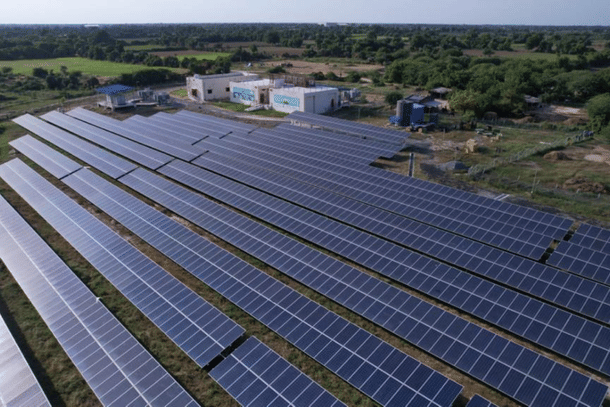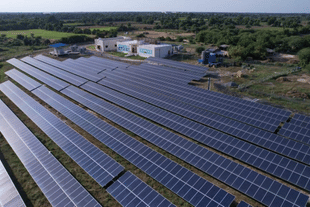Infrastructure
India's Solar Surge Sparks Garbage Crisis: Study Forecasts 600 Kilo-Tonnes Of Photovoltaic Waste By 2030
Amit Mishra
Mar 21, 2024, 04:51 PM | Updated 05:01 PM IST
Save & read from anywhere!
Bookmark stories for easy access on any device or the Swarajya app.


As India expands its solar power capacity, concerns are mounting around solar waste management.
A new study published on Wednesday (20 March) has warned that India has already generated about 100 kilotonnes (kt) of solar waste, which is expected to increase to 340 kt by 2030.
The analysis, titled "Enabling a Circular Economy in India’s Solar Industry — Assessing the Solar Waste Quantum," was conducted by the Ministry of New and Renewable Energy and the Council on Energy, Environment, and Water, a climate think tank.
Solar waste refers to both the waste generated during the cell- and module-manufacturing processes and waste from the field (project lifetime), according to the study.
The waste from the field involves three streams: modules damaged during transportation and handling; modules damaged from operational negligence or manufacturing defects arising during the project life; and modules that reach their end-of-life and are no longer usable.
The study focused solely on waste from the field (project lifetime) category and excluded waste generated during manufacturing.
India’s installed solar capacity has grown 26 times in the last decade, reaching 73.32 GW in December 2023, and is expected to jump to 292 GW by 2030.
Based on this data, the study notes that by 2030, India’s solar photo-voltaic waste will increase more than threefold, to 334 kt. Around 67 per cent of this waste is expected to be generated in five states, including Rajasthan, Gujarat, Karnataka, Tamil Nadu, and Andhra Pradesh.
Further, the cumulative waste from existing and new capacity (deployed between FY24 and FY30) will reach about 600 kt by 2030, according to the report. By 2050, it is projected to increase to about 19,000 kt, with 77 per cent of it generated from new capacities.
Calling for proactive measures through policies, the report argues for responsible handling of solar waste and leveraging the multiple environmental, economic, and social benefits that accompany it.
For example, the study notes that the 340 kt of waste expected to be produced by 2030 will likely contain a total of 32 kt of aluminum, 10.4 kt of silicon, and 12–18 tonnes of silver. It will also contain 16 tonnes of cadmium and tellurium each, and 190 tonnes of lead.
Many of these minerals, including silicon, copper, tellurium, and cadmium, have been classified as critical minerals by the centre. Recycling solar waste to recover these materials will reduce import dependency and enhance India’s mineral security, according to the report.





